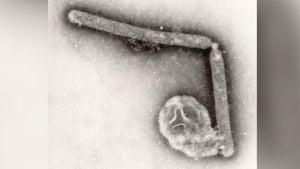Navigational challenges and technical failures have recently left two astronauts, Barry "Butch" Wilmore and Sunita "Suni" Williams, stranded aboard the International Space Station (ISS) for months longer than originally planned. After successfully arriving at the ISS on June 5 aboard Boeing's Starliner during its inaugural crewed mission, the duo has had to delay their return to Earth due to troubling issues related to the spacecraft's technology.
NASA recently announced plans to transport Wilmore and Williams back home via SpaceX's Crew Dragon capsule, but this return won’t happen until February 2025. The agency deemed it impractical and unsafe for them to return aboard the Starliner due to technical problems, including helium leaks and thruster failures discovered after their launch.
NASA made the decision this past week to delay their return, bumping two astronauts from the upcoming SpaceX launch to accommodate the returning pair. NASA astronauts Zena Cardman and Stephanie Wilson were informed they wouldn’t join the next SpaceX crew scheduled to launch on September 1, highlighting the impact of the current situation on future missions as well. The agency stated they could potentially fly on future missions.
This isn't the first time the astronauts have encountered challenges. After successfully completing their initial mission to provide insight and testing for the Starliner, Wilmore and Williams found themselves still in orbit. The prolonged stay at the ISS has not dampened their spirits, as both astronauts remain engaged with the experiments and maintenance tasks aboard the space station.
Cady Coleman, another retired NASA astronaut, expressed feelings of jealousy about the situation. Coleman spent months aboard the ISS during her missions and understands the benefits of extended time spent beyond Earth. She described space as “like being transported to another world,” emphasizing how precious the experience is for astronauts.
Reflecting on the current experience of Wilmore and Williams, Coleman noted, “This is what astronauts dream of: more time in space.” Their additional time aboard the space station presents exciting opportunities for conducting scientific experiments and supporting the continued investigation of life and work in low gravity.
While many might assume being stranded would lead to boredom or anxiety, astronauts have extensive schedules filled with research, experiments, and maintenance tasks to keep them engaged and productive. Coleman pointed out they have “a whole list of experiments and maintenance” to accomplish, especially as the unique conditions allow them to explore phenomena impossible to study on Earth.
One aspect of life aboard the ISS includes maintaining physical health through exercise, as the weightless environment can lead to muscle atrophy and bone density loss. Using specialized equipment, astronauts work out for approximately two hours daily to keep their bodies healthy. This practice is especially needed as research shows astronauts can lose significant bone mass without proper exercise.
Despite having to contend with unforeseen technology failures, the astronauts aboard the ISS are not entirely alone; they maintain regular communications with mission control and work collaboratively with other space agencies, such as the Russian space program, which also plays a role in crew rotations.
This collaborative approach is part of larger efforts by NASA to encourage partnerships with private companies. The agency has significantly relied on SpaceX to transport astronauts since transitioning from the shuttle program, creating opportunities for commercial investments and astronaut transportation.
NASA Administrator Bill Nelson remarked, “We knew flying to space carried risks, and it is our commitment to always prioritize the safety of our astronauts.” This perspective reflects the agency's cautious yet transparent stance toward unforeseen challenges like the one currently facing Wilmore and Williams.
For now, both astronauts will continue their work aboard the ISS until the anticipated return date. Fortunately, they have embraced this opportunity, and the space agency remains optimistic about the valuable data being gathered during their extended mission.
Whispers of future explorations to the moon and Mars are backed by the knowledge gained from experiences like those faced by Wilmore and Williams. Each mission contributes to our scientific knowledge and capability to send humans farther from our home planet safely.
At the heart of the matter is the delicate balance between exploration and risk management. The NASA team remains alert to any issues and continues to monitor both the astronauts and the spacecraft's condition, proving time and again their dedication to pushing the boundaries of human exploration.
Data collected during their extended stay, including experiments evaluating biological responses to microgravity and engineering challenges, will inform future space missions, contributing valuable insights and lessons learned to advance humanity's next steps toward interplanetary travel.
Everyone is keeping their fingers crossed for the return of Wilmore and Williams and hoping the launch of the Crew Dragon spacecraft goes off without any hitches. Until then, they continue their work at the ISS, fostering international collaboration and elevatory science, all for the future of space exploration.



